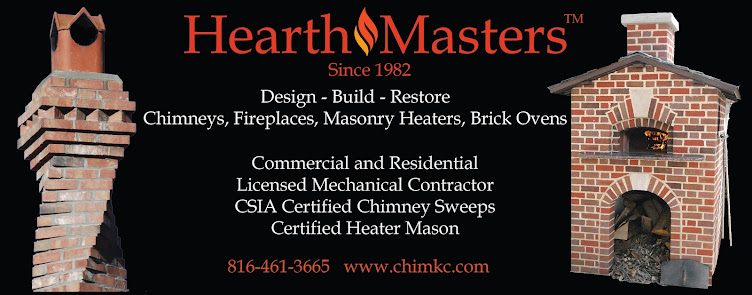According to the U.S. Fire Administration, an estimated 32,200 home heating fires were reported to fire departments within the United States. These fires caused an estimated 190 deaths, 625 injuries and $442 million in property loss. Home heating fires account for 500 deaths per year.
There are over 25,000 chimney fires in the U.S. annually, and three out of 10 house fires (44,000) are related to heating appliances. For this reason alone, it is important to keep chimneys maintained, but performance problems can also arise that are not related to hostile fires.
Note: A "Friendly Fire" is one that is intended such as a fire in the fireplace or a candle burning. It becomes a "Hostile Fire" when it reaches beyond its intended location.
ALL OF THESE FIRES ARE PREVENTABLE
It is important to remember that ALL wood creates creosote, even hardwoods. The creosote must be removed by brushing with a special wire chimney brush for tile flue liners, or a poly brush for stainless steel flue liners or metal chimney pipe. The wrong type of brush can damage metal liners.
Chimneys should be swept when there is 1/8" or more of creosote on the flue walls. This is difficult to see, so another rule of thumb is to have the chimney swept annually for open fireplaces or at least twice seasonally for inserts or freestanding stoves.
How to prevent chimney fires
- Have the chimney swept regularly by a professional chimney sweep, who will also inspect the chimney to be sure it is in good working order.
- Use only dry wood (check with a moisture meter) that has been seasoned for a minimum of 6 months.
- Never burn dry Christmas trees, wrapping paper, or newspaper as these items often cause fires.
- The use of a "Chimney sweeping log" may result in a chimney fire since it detaches creosote from the flue walls and brings it closer to the fireplace, but does not remove the creosote.
- Use inserts and freestanding wood-burning stoves according to the manufacturer's instructions by leaving the door closed during burning, and regulating air intake so it does not overfire the stove. Overheating can ignite creosote in the pipe or flue without direct flame.
Most chimney fires are not detected by the homeowner
Chimney fire damage is usually detected by a chimney sweep during sweeping and inspection. Telltale signs are broken flue liners, blown out mortar joints, buckled metal liners or pipe, white hot spots, and burnt honeycomb creosote. There may also be expansion breaks in masonry. With this in mind, we estimate that there are 10 times the official reported totals!
While there are chimney fire signs to watch out for such as a loud wooshing or freight train sound and flames shooting out the top of the chimney, chimney fires are usually of short duration and not noticed while people are out of the room.
Damaged chimney flue liners can allow Carbon Monoxide, creosote, and smoke to escape into the area outside the liner and possibly into the house, making a damaged chimney a potential hazard. This is why it is so important to have regular inspections completed.
For more information visit www.chimkc.com
--------------------------------------------------------------
Marge Padgit is a veteran chimney contractor, writer, and podcast host. Contact her at margepadgitt@gmail.com











